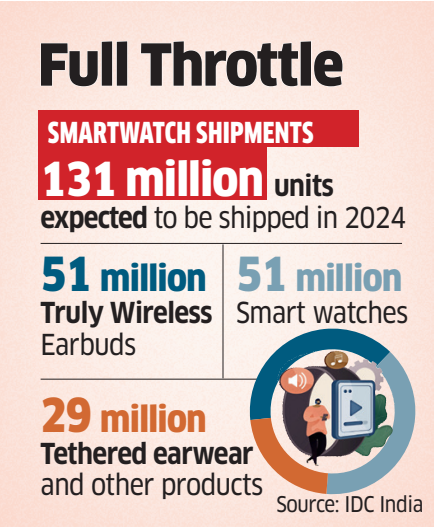Growing wearables production in India bleeds China units
Wearables manufacturing in the country is going from strength to strength, in a big boost for the government’s ‘Make in India’ initiative. And this is proving fatal for businesses in China, which have seen their order books shrink.
SOURCE: Economic Times IndiaMove to India: Top wearables brands such as Boat and Gizmore are making most products, including in the key audio and smartwatch categories, through local electronics contract manufacturers such as Dixon Technologies and Optiemus Electronics, senior officials told ET.Sameer Mehta, chief executive of Boat, said that almost 75% of the company’s audio products and around 95% of its smartwatches are being made in India, a huge jump from 20-25% of its annual volumes from last year. The capacities of Chinese factories that the company worked with have been slashed to 50%.

Sanjay Kalirona, chief executive at Noida-based Gizmore, had a similar story to tell. “Because wearables assembly as a whole has shifted from China to India, most factories (in China) that were assembling truly wireless earbuds, neck bands and smartwatches are sitting without orders.”China hit: Two wearables manufacturing executives told ET on condition of anonymity that the dependence on Chinese factories was declining month on month. They said the fall in manufacturing has largely affected small and medium wearables manufacturers, which are mostly based out of Shenzhen in China.Fully local? Not yet: Companies may be largely manufacturing in India now, but they are still heavily reliant on China for components.

Positive outlook for wearables: Top market research firms have bumped up forecasts for India’s wearable device shipments in 2024, citing falling average selling prices, exponential demand from new-generation consumers, and boost in local manufacturing.The research firm said that 73.9% of the sales of wearables are from online channels. That said, the top wearable brands are now looking to tap into the offline segment for their next phase of growth.










